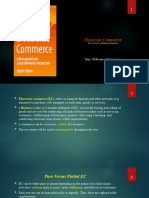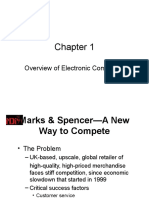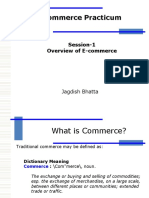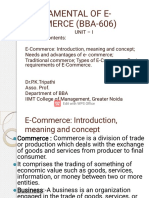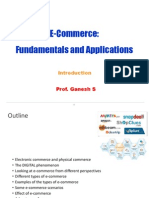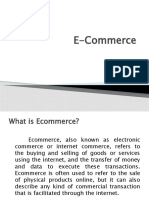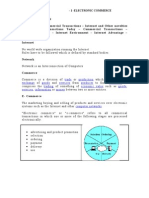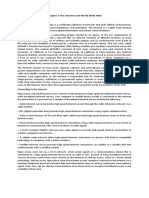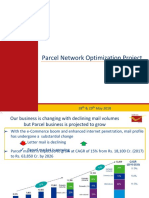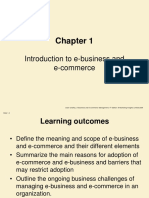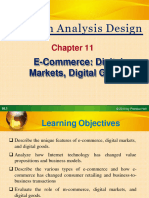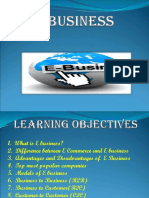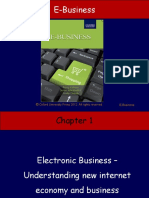0% found this document useful (0 votes)
76 views63 pagesChapter1.ppt Lecture1
This document provides an introduction to electronic commerce (EC) and e-business. It defines EC as business transactions conducted over telecommunications networks, especially the internet. E-business is defined more broadly to include customer service, collaborations, and internal transactions in addition to buying and selling. The document outlines the benefits of EC for organizations, customers, and society. These include expanded markets, reduced costs, increased choices, and more convenient shopping. It also presents frameworks and models for understanding EC, including classifications based on the nature of transactions between businesses, consumers, and within organizations.
Uploaded by
Mahratun Tanha 2121705630Copyright
© © All Rights Reserved
We take content rights seriously. If you suspect this is your content, claim it here.
Available Formats
Download as PPT, PDF, TXT or read online on Scribd
0% found this document useful (0 votes)
76 views63 pagesChapter1.ppt Lecture1
This document provides an introduction to electronic commerce (EC) and e-business. It defines EC as business transactions conducted over telecommunications networks, especially the internet. E-business is defined more broadly to include customer service, collaborations, and internal transactions in addition to buying and selling. The document outlines the benefits of EC for organizations, customers, and society. These include expanded markets, reduced costs, increased choices, and more convenient shopping. It also presents frameworks and models for understanding EC, including classifications based on the nature of transactions between businesses, consumers, and within organizations.
Uploaded by
Mahratun Tanha 2121705630Copyright
© © All Rights Reserved
We take content rights seriously. If you suspect this is your content, claim it here.
Available Formats
Download as PPT, PDF, TXT or read online on Scribd
/ 63

